#Archduchess Maria Christina
Photo
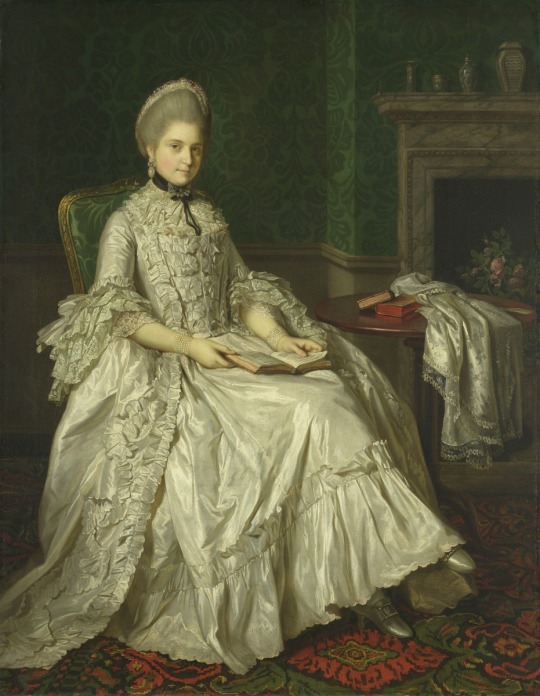

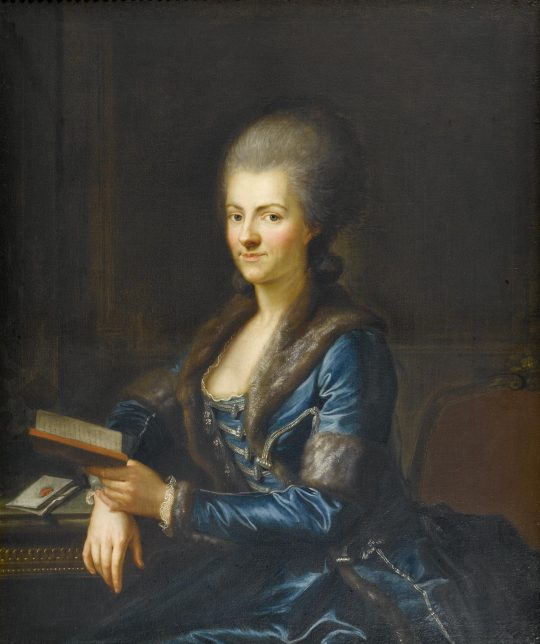

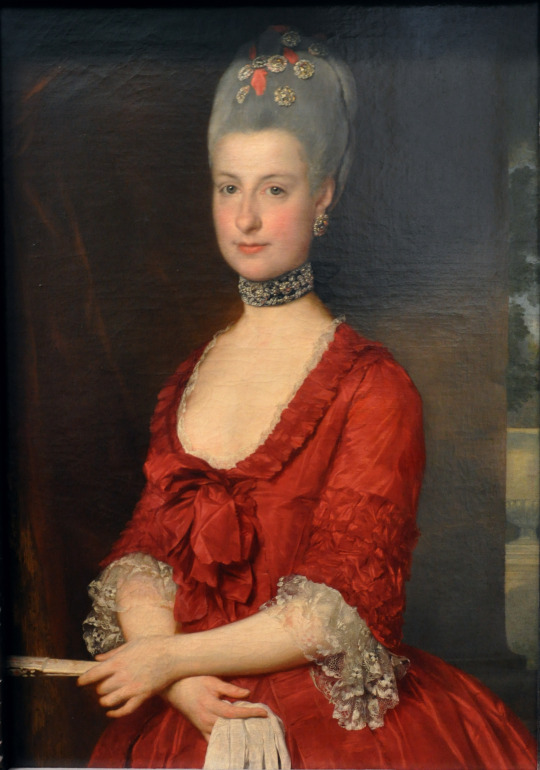

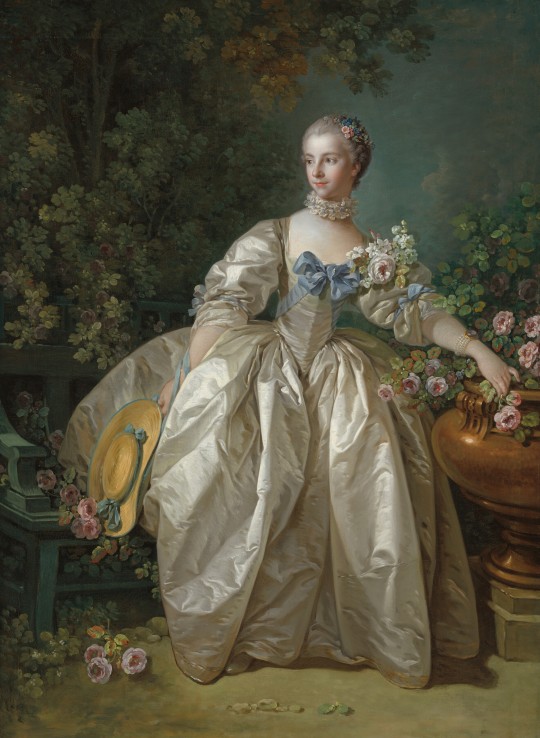


ca. 1766-1769 Maria Walpole, Duchess of Gloucester by ? (Virginia Museum of Fine Arts - Richmond, Virginia, USA). From history-of-fashion.tumblr.com/post/159078324404/ab-1766-1769-nathaniel-dance-holland-portrait 931X1200 @72 356kj.
1766 Comtesse Marie-Louise de Beaurepaire by Louis-Michel Van Loo (auctioned by Sotheby's). From their Web site; increased exposure 2167X2834 @150 7.6Mp.
From 1765 until 1766 Elisabeth Sulzer by Anton Graff (location ?). From Wikimedia via pinterest.com/SannaMaK/18th-century-fur-trim/ 1677X2000 @72 1Mj.
From 1765 until 1766 Elisabeth Sulzer by Anton Graff (location ?). From Wikimedia via pinterest.com/SannaMaK/18th-century-fur-trim/ 1677X2000 @72 1Mj.
ca. 1766 Mrs. Barnard Elliott, Jr. (Mary Elizabeth Bellinger Elliott) by Jeremiah Theus (Gibbes Museum of Art - Charleston, South Carolina, USA). From Wikimedia 2461X3001 @38pixels/cm 2.7Mj.
1766 Archduchess Maria Christina, Duchess of Teschen by Marcello Bacciarelli (Kunsthistorisches Museum - Wien, Austria). From Wikimedia 1828X2608 @300 1.3Mj.
1766 Annette, Comtesse de Vergennes in Oriental Costume by Antoine de Favray (private collection). From Google Art Project via Wikimedia 1974X2026 @97 3.5Mj.
1766 (?) Madame Bergeret by François Boucher (National Gallery of Art - Washington, DC, USA). From their Web site 2999X4096 #72 3.9Mj.
1766 Fête donnée par le prince de Conti au Prince héréditaire Charles Guillaume Ferdinand de Brunswick-Lunebourg by Michel Barthélemy Ollivier entire scene (Châteaux de Versailles et de Trianon - Versailles, Île-de-France, France)1117X.840 @96 414kj.
1766 Fête donnée par le prince de Conti au Prince héréditaire Charles Guillaume Ferdinand de Brunswick-Lunebourg by Michel Barthélemy Ollivier right center (Châteaux de Versailles et de Trianon - Versailles, Île-de-France, France) 1137X.852 @96 261kj
#1766 fashion#Rococo fashion#Georgian fashion#Louis XV fashion#Maria Walpole#Marie-Louise de Beaurepaire#Louis-Michel Van Loo#Elisabeth Sulzer#Anton Graff#Jeremiah Theus#Archduchess Maria Christina#Marcello Bacciarelli#Comtesse de Vergennes#turquerie#orientalism#Antoine de Favray#Madame Bergeret#Michel Barthélemy Ollivier#picnic scene
19 notes
·
View notes
Text

[Isabella of Parma] was a talented observer of others, and she made it her overriding ambition from early on to win over every member of the imperial family. We know just how assiduously and intelligently she practiced this art from the roughly two hundred letters to Archduchess Maria Christina that have come down to us.
These letters betray an almost obsessive concern with gaining the undivided love and attention of Maria Christina, the same age as Isabella and the object of her consuming passion. She had already started writing to her future sister-in-law before they met, doing all she could to create a climate of friendly intimacy. She called her ma soeur fidèle, my faithful sister, and declared her tender admiration for the empress and her love of Germany. Following her arrival in Vienna, the correspondence gradually intensified into ever more effusive expressions of attachment and devotion. The stream of letters did not abate even when the two women were seeing each other almost every day at court. Letters were considered the “mirror of the soul”; they provided an outlet for what could not be said in the strictly ceremonialized everyday life of the court. “My adorable sister,” Isabella writes repeatedly, “my goddess! my heart! my angel! Venus! I am mad with love for you; I love you to distraction; I worship you!” She then speaks of her lover’s “devilish” character, her cruelty and disloyalty. Much remains incomprehensible to later readers, as when Isabella refers to shared experiences and secrets (“yesterday’s adventure”), makes ironic allusions, or uses cover names. Time and again she declares herself deeply wounded, “soaked in tears,” because Maria Christina has paid her insufficient attention, and demands proofs of her love; she then begs her to forgive her jealousy. She tries to arrange secret rendezvous for the two of them, refers to their joint “marriage” and a mysterious “wedding present,” calls herself Maria’s amant, lover, or mari, husband, and refers to the two of them—alluding to operas they had attended—as Orpheus and Eurydice, Zerbin and Laurette, or Linon and Lisette. She airs the greatest intimacies without any sense of shame, drastically showing today’s readers just how low the threshold of embarrassment was in such matters. At any rate, what is invoked in these letters is far more than Platonic infatuation: “I cover you all over with my kisses,” she exclaims, “I kiss everything you let me kiss,” or even—in German in the original rather than the usual French—“I kiss your archangelic ass.” Maria Christina’s reactions have not survived, but they appear to have been more reserved, since Isabella calls her a saint and writes: “Despite your saintliness, I kiss you with all my soul, so that they may be said to be pious kisses, for what comes from the soul is purely spiritual and not of this earth, although I love all that is down-to-earth.” On the rare occasions when Isabella mentions her husband, then it is as an unwelcome intrusion, the “rival” of her beloved. Among the essays composed by Isabella there is a short, sarcastic “Treatise on Men”: the most useless creatures in all the world, good for nothing other than selfishness, more irrational than animals, elevated by God above women only so that male flaws would cause female virtues to shine all the more brightly. If girls had not been persuaded that they were useless, they would cope very well without their menfolk. The devil had a hand in play when men were created, women had no choice but to make the best of a bad lot.
Stollberg-Rilinger, Barbara (2020). Maria Theresa: The Habsburg Empress in her Time (translation by Robert Savage)
#happy pride day~#isabella of parma archduchess of austria#archduchess maria christina of austria duchess of teschen#historian: barbara stollberg rilinger#Maria Theresa: The Habsburg Empress in her Time#historicwomendaily
37 notes
·
View notes
Photo
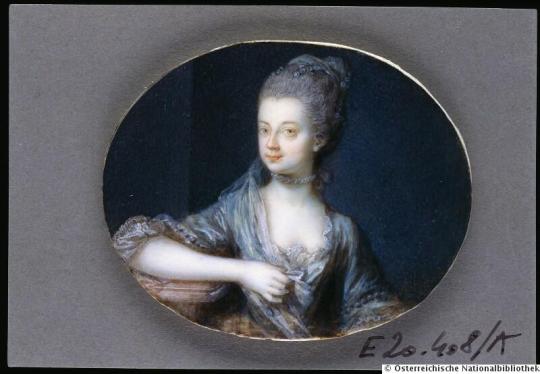
Miniature of Maria Christina of Austria, Duchess of Teschen.
#maria christina of austria#duchess of teschen#archduchess#house of habsburg lorraine#habsburg lorraine#austria#long live the queue
24 notes
·
View notes
Text



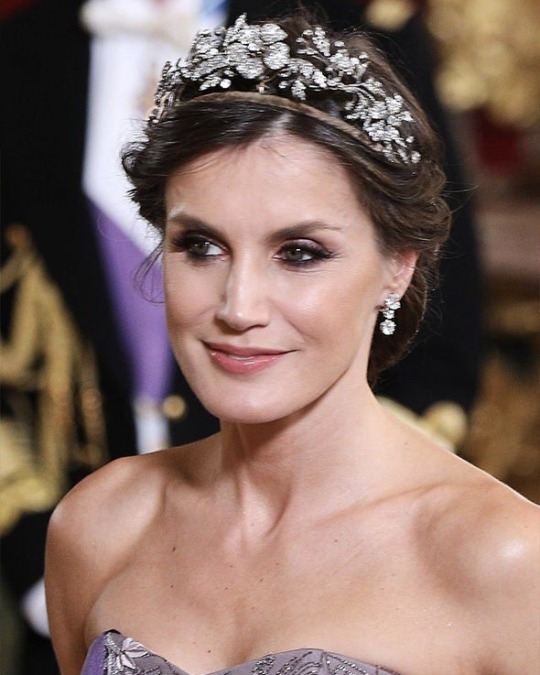
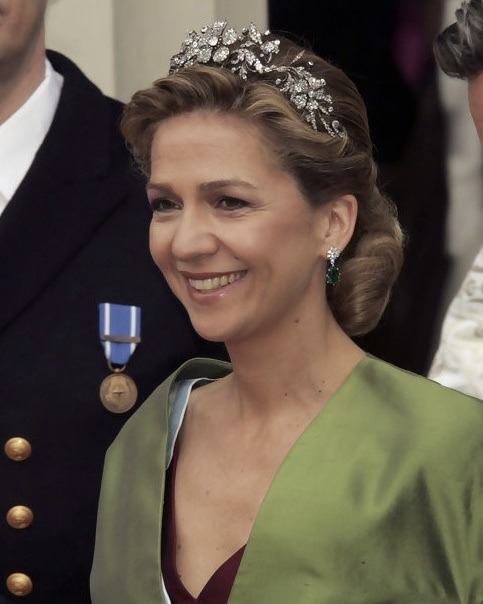
Royal Tiaras Highlights: Spanish Floral Tiara
The piece was designed by J.P. Collins in 1879 as a gift from King Alfonso XII of Spain to his future wife Archduchess Maria Christina of Austria. The tiara was sold in the 1930s by the family when they went into exile and it was eventually bought by Francisco Franco as a wedding gift to Princess Sophia of Greece and Denmark, future Queen Sofia of Spain. The tiara is a personal possession of Sofia, but Queen Letizia has worn it publicly in many occasions.
#tiaras highlights#srf#royal tiaras#royal jewels#royal jewelry#queen letizia#queen sofia#infanta elena
42 notes
·
View notes
Text

Archduchess Maria Christina attributed to Martin van Meytens, 1765.
#classic art#painting#martin van meytens#austrian artist#18th century#portrait#female portrait#indoor portrait#princess#habsburg#fashion
9 notes
·
View notes
Text

Chère Eurydice
J'aurais pleuré autant qu'Orphée dans l'idée seule que vous êtes mortelle.
(I would have cried as much as Orpheus just thinking that you are mortal.)
Archduchess Maria Christina of Austria (1742 - 1798) and Princess Isabella of Parma (1741 - 1763)
8 notes
·
View notes
Text



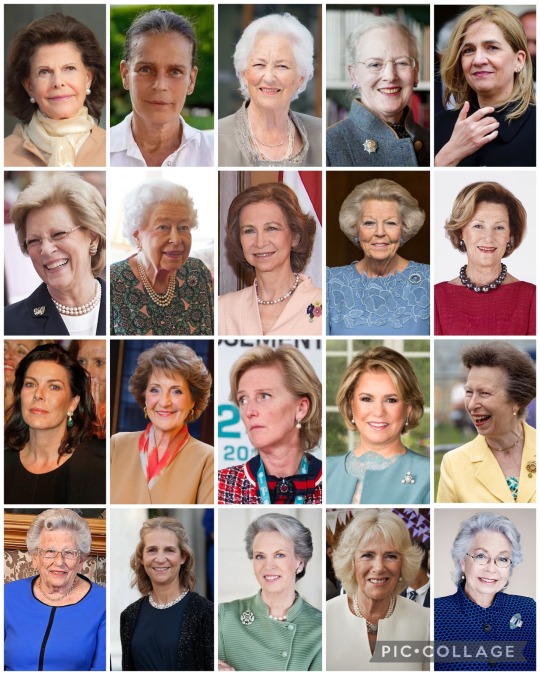
Royal women
1. Princess Charlotte of Cambridge
2. Princess Gabriella of Monaco
3. The Princess of Asturias
4. Princess Ariane of The Netherlands
5. Princess Adrienne of Sweden
6. Countess Zaria of Orange Nassau
7. Princess Athena of Denmark
8. Princess Amalia of Nassau
9. Irene Urdangarin
10. Countess Leonore of Orange Nassau
11. Princess Leonor of Sweden
12. Emma Behn
13. Infanta Sofia of Spain
14. Princess Josephine of Denmark
15. Princess Alexia of The Netherlands
16. Princess Isabella of Denmark
17. Princess Estelle of Sweden
18. Princess Elèonore of Belgium
19. Lilibet Mountbatten-Windsor
20. Countess Luana of Orange Nassau
21. Princess Louise of Belgium
22. The Duchess of Brabant
23. Princess Eugenie of York
24. Leah Behn
25. Countess Eloise of Orange Nassau
26. Maud Behn
27. Princess Laetita of Belgium (also archduchess of Austria Este)
27. Princess Ingrid Alexandra of Norway
29. Camille Gottlieb
30. Victoria Federica Marichalar
31. Princess Alexandra of Luxembourg
32. The Princess of Orange
33. Princess Alexandra of Hannover
34. Princess Elisabetta of Belgium (also archduchess of Austria Este)
35. Princess Maria Laura of Belgium (also archduchess of Austria Este)
36. Charlotte Casiraghi
37. Princess Beatrice of York
38. Princess Maria Luisa of Belgium (also archduchess of Austria Este)
39. Pauline Ducruet
40. Lady Louise Mountbatten-Windsor
41. The Countess of Wessex
42. Crown Princess Mary of Denmark
43. Queen Mathilde of the belgians
44. Princess Sofia of Sweden
45. Princess Martha Louise of Norway
46. Crown Princess Victoria of Sweden
47. Crown Princess Mette-Marit of Norway
48. Queen Maxima of the Netherlands
49. Princess Stèphanie of Luxembourg
50. Princess Marie of Denmark
51. Queen Letizia of Spain
52. Princess Mabel of Orange Nassau
53. Princess Madeleine of Sweden
54. The Duchess of Cambridge
55. Princess Claire of Luxembourg
56. Princess Claire of Belgium
57. The Duchess of Sussex
58. Princess Charlène of Monaco
59. Zara Tindall (neé Phillips)
60. Princess Laurentien of The Netherlands
61. Queen Silvia of Sweden
62. Princess Stèphanie of Monaco
63. Queen Paola of Belgium
64. Queen Margrethe II of Denmark
65. Infanta Cristina of Spain
66. Queen Anne Marie of Greece (née princess of Greece)
67. Queen Elizabeth II
68. Queen Sofia of Spain
69. Princess Beatrix of The Netherlands
70. Queen Sonja of Norway
71. Princess Caroline of Monaco (also princess of Hannover)
72. Princess Margriet of The Netherlands
73. Princess Astrid of Belgium (also archduchess of Austria Este)
74. Grand Duchesse Maria Teresa of Luxembourg
75. The Royal Princess
76. Princess Astrid of Norway
77. Infanta Elena of Spain
78. Princess Benedikte of Denmark (also princess of Sayn Wittgenstein)
79. The Duchess of Cornwall
80. Princess Christina or Sweden
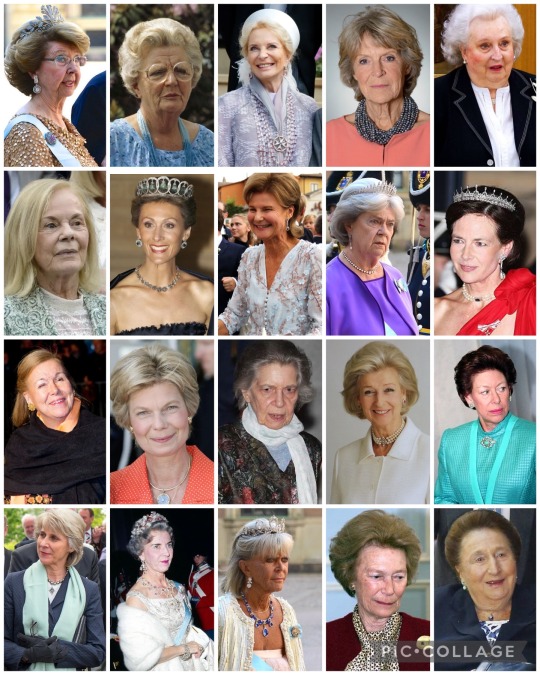
Plus other royal women that support or had supported the Crown
1. Princess Desiree of Sweden
2. Queen Juliana of The Netherlands
3. Princess Michael of Kent
4. Princess Irene of The Netherlands
5. Infanta Pilar of Spain
6. The Duchess of Kent
7. Princess Sibilla of Luxembourg
8. Princess Margaretha of Luxembourg (also princess of Liechtenstein)
9. Princess Margaretha of Sweden
10. Countess Diane of Nassau
11. Princess Christina of The Netherlands
12. Princess Marie-Astrid of Luxembourg (also archduchess of Austria Este)
13. Princess Irene of Greece
14. Princess Alexandra of Kent
15. Princess Margaret, countess of Snowdon
16. The Duchess of Gloucester
17. Queen Ingrid of Denmark (née princess of Sweden)
18. Princess Birgitta of Sweden
19. Grand Duchesse Josephine Charlotte of Luxembourg (née princess of Belgium)
20. Infanta Margarita of Spain
#princess charlene#princess charlotte#princess estelle#princess leonore#princess madeleine#princess josephine#princess alexia#princess mary of denmark#princess elisabeth#princess eugenie#princess beatrice#princess beatrix#princess gabriella#princess amalia#princess ariane#princess adrienne#princess leonor#infanta sofia#infanta cristina#infanta elena#princess athena#princess isabella#irene urdangarin#princess eleonore#lilibet#meghan markle#kate middleton#queen maxima#queen mathilde#queenletizia
11 notes
·
View notes
Text
Hunting after the war
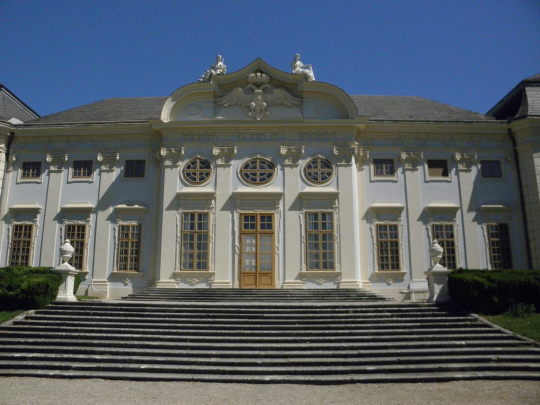
When the architect Johann Lukas von Hildebrandt began planning the construction of Schloß Halbturn in 1701, it was only a hunting lodge and Austria was still under the rule of Emperor Joseph I. Located on the borderlands between the Austrian and Hungarian possessions, it was only a short distance from Lake Neusiedl.
When the original construction was completed in 1711, a new emperor assumed the highest office in the Holy Roman-Germanic Empire, Karl VI, who ended his Spanish adventure by attempting to become the effective king of Spain under the name of Charles III. Halbturn was to become his hunting lodge for the new times that awaited him.
However, the documented existence of Halbturn dates back at least to the 15th century, when the Counts of Bazin (Bösing, in German, the present-day Slovak town of Pezinok) disputed the boundaries of their possessions with the abbey of Heiligenkreuz. On that occasion, the Hungarian king Mátyás Hunyadi, better known as Matthias Corvinus, was asked to act as arbitrator, and the abbey benefited from property and vineyards.
The area around Halbturn was present in Roman times, documented by a cemetery from the Imperial period and a Roman villa. A Jewish community is believed to have existed as early as the 3rd century.
The name Halbturn is identified with a half-ruined tower or damaged fortification. Its origin may have served to protect the road from Neusiedl to Altenburg (the modern Hungarian town of Mosonmagyaróvár) and from Ödenburg (Sopron in Hungarian) to Preßburg (the German name for the present-day Slovak capital, Bratislava).
In 1516, the Bazin family died out and their possessions reverted to the crown. The then king Lajos II of Hungary and Bohemia (under the name Ludvík I) bequeathed the estate to his wife Maria, sister of the Austrian Archduke Ferdinand I, who took over after her husband's death at the hands of the Turks at the battle of Mohács (1526).
When Queen Maria died in 1558, the possession of Halbturn passed to the Austrian Habsburgs, who already held the Imperial, Bohemian, Croatian and Hungarian crowns.
But let us return to the 18th century. During the reign of Karl VI's daughter Maria Theresia, Halbturn was rebuilt under the direction of the architect Franz Anton Hillebrandt as the summer residence of the regents of Hungary, Archduchess Maria Christina and her husband, Albert of Saxony-Teschen.
In the 19th century, the usual name was the Hungarian Féltorony, an evolution of Felthorom, documented in the 15th century, until after World War I most of the territory surrounding Lake Neusiedl became the present-day federal state of Burgenland, which was incorporated into the Republic of Austria in 1921.
2 notes
·
View notes
Photo
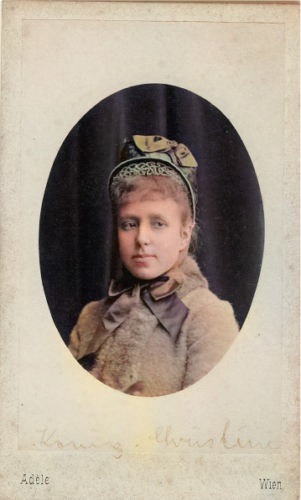
The most influential personage in Spain, during the present momentous crisis of its fortunes, is the Queen Regent, Maria Christina. The maintenance of peace until recently between Spain and the United States was due in large measure to her conservatism, tact, and sagacity in facilitating a change of ministry, and enabling Sagasta to recall General Weyler from Cuba at an opportune moment. She is by birth an Austrian Grand Duchess, a daughter of the Archduke Karl Ferdinand and his second wife, the Archduchess Elizabeth. She was conspicuous in her youth for her beauty and amiability, and has shown during her career in Spain that she possesses keen intelligence and sobriety of judgement – the best traits of the Hapsburg-Lorraine house. Alfonso XIII was born in 1886, after his father's death. His mother has been the Regent during his minority, and although an Austrian by birth, she has commanded the loyal support of her Spanish subjects. If she had been Queen in her own right she could not have exercised greater power and influence. The education of her son has been her chief care, and she has directed it with homely common sense and maternal affection. She has also faced all the responsibilities of government with courage and firmness. She is a good Queen and a wise woman, and her great ambition is to preserve the monarchy for her son.
-Current Opinion, 1898
6 notes
·
View notes
Text
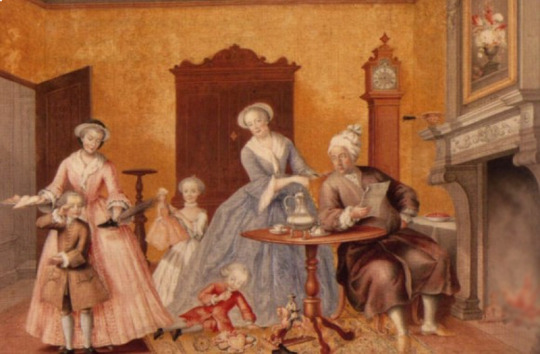
The Imperial family celebrating Saint Nicholas, by Archduchess Maria Christina, 1762
0 notes
Note
Relating to that gifset you posted lately - who is your favourite child of Maria Theresa? Do you even have a favourite? Because people on tumblr constantly asks stuff like "favourite wife of Henry VIII", when clearly, THIS is the all-important question we should be asking instead.
You're absolutely right, this is what we should all be asking.
I don't think I have a "proper" favorite, mainly because all I know about the children I know it either through a Maria Theresia biography, or through cultural osmosis. I'd say I have more of an "inclination" for some of them? A "yeah this one seems like blorbo material an interesting historical figure to study in more detail later" sort of thing.
I think if I have to name one that would be Maria Carolina, mainly because I have a weakness for Deposed Queens of Naples. Plus she's the ancestor of over half the people I talk about here (by the 19th century the Bourbon-Habsburg family tree was a circle). She's the one that lived the longest and the daughter that played the most active role in history, yet she's strangely not really known outside the Habsburg/Napoleonica connaisseurs sphere? Which I find actually weird to be honest. So I want to learn more about in the near future.
Maria Christina would be another one, because somehow she managed to be the favorite child out of a group of sixteen people, which is admirable. She was a bicon, convinced her mother the Queen of Arranged Marriages to let her marry for love with Some Guy, was Governor of the Austrian Netherlands; and this is just the tip of the iceberg, I def want to learn more about her too.
On the opposite end I also find Maria Amalia interesting because somehow she managed to be the hated child out of a group of sixteen people, which is admirable.
While reading Barbara Stollberg-Rilinger's biography of Maria Theresia one of my biggest surprises was how much I enjoyed Joseph's chapters. I don't know what I thought about him before, but the book reintroduced him to me as a man full of contradictions, and now I actively want to know more about him.
And finally bit of a hot take but I'm more interested in Archduchess Maria Antonia than in Queen Marie Antoinette. We've been exposed to the "teen queen" and the "queen of excesses" dozens of times, and to a lesser extent to the "martyr queen", but her actual childhood remains almost unknown, which makes me want to know more about it. Also I'm just more into Habsburg history in general, so while the affair of the necklace puts me to sleep, any small interaction between Marie Antoinette and her family has all my attention. Also as a side note, I think it's really interesting that today she is remembered as a French queen (to the point some people even think she was born and raised in France) when during her lifetime she could never shake off being "Austrian".
Thank you for your question!
#btw katherine howard is my fav wife#asks#queen maria carolina of naples#archduchess maria christina of austria duchess of teschen#maria amalia of austria duchess of parma#joseph ii holy roman emperor#queen marie antoinette of france#house of habsburg
11 notes
·
View notes
Photo
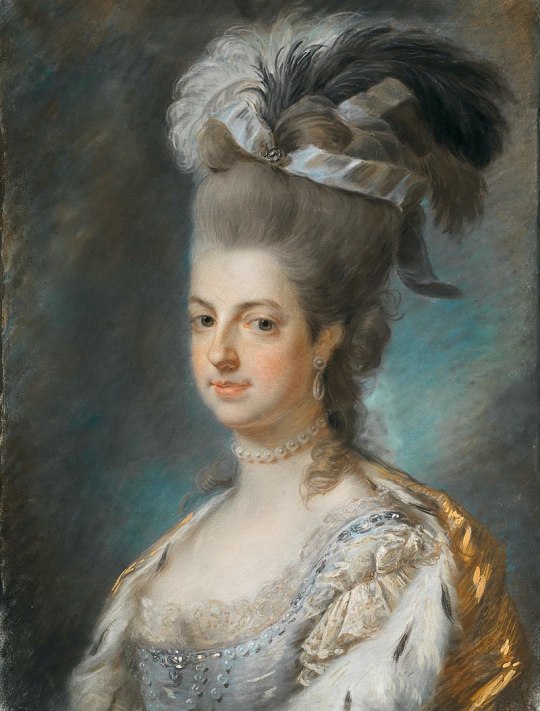
Maria Christina of Austria, Duchess of Teschen.
#maria christina of austria#duchess of teschen#house of habsburg lorraine#habsburg lorraine#archduchess#austria#18th century#18th century art#long live the queue
54 notes
·
View notes
Photo

The Habsburg-Lorraine Sisters ❧ Archduchess Maria Christina Johanna Josepha Antonia (13 May 1742 - 24 Jun 1798)
27 notes
·
View notes
Text
DECEMBER 31: Isabella of Parma (1741-1763)
The granddaughter of King Louis XV of France, Princess Isabella of Parma, was born on this day in 1741. Isabella was related to the royal families of both France and Spain and is remembered for having an affair with the Archduchess Maria Christina.

16-year-old Isabella of Parma as painted by Jean-Marc Nattier in 1757 (x).
Isabella Maria Luisa Antonietta Ferdinanda Giuseppina Saveria Dominica Giovanna (*gasp*) was born on December 31, 1741 in Madrid, Spain at the Buen Retiro Palace. Her father was Prince Phillip of Spain and her mother was Élisabeth of France, the eldest daughter of King Louis XV. Élisabeth’s marriage had been arranged when she was very young and she was only 14-years-old when she gave birth to Isabella. Undeniably due in part to her mother’s young age, Isabella’s parents did not have a happy marriage and her childhood was riddled with family drama. She was estranged from her father and grew up very close to her mother, which only ended in grief when Élisabeth died of smallpox in 1759. The tragedy of her mother’s death convinced Isabella for many years that she too was cursed to die a young death.
In 1760, she was married off to Archduke Joseph of Austria, the eventual king of the Habsburg Monarchy (and also the older brother of fellow lesbian icon Marie Antoinette). Isabella was only 18 at the time of their marriage and despite Joseph affectionately welcoming her to her new home in Austria, she isolated herself in the palace and is believed to have been plagued by depression for much of her married life. It was her sister-in-law, Joseph’s sister Archduchess Maria Christina, who Isabella truly felt romantic feelings for rather than her husband.
Mimi, as Maria was nicknamed, was the one of the few people of the Viennese court who Isabella spent time with and allowed into her personal chambers. While they were at court together, they exchanged over 200 letters and were nicknamed Orpheus and Eurydice in reference to the romantic Greek myth. In two separate letters to Mimi, Isabella writes:
“I can think of nothing but that I am deeply in love. If I only knew why this is so, for you are so without mercy that one should not love you, but I cannot help myself,” and
“I am told that the day begins with God. I, however, begin the day by thinking of the object of my love, for I think of her incessantly.”
Sadly, the two women’s affair was ended once Mimi was shipped off to Hungary to be married. Only Isabella’s letters to Mimi were preserved, as Mimi’s to Isabella were destroyed after her death.
With her lover gone and the Habsburg monarchy eagerly awaiting a new heir, Isabella was forced to confront her royal duty. Despite feeling little to no affection for her husband and being plagued by anxiety over sex with him, Isabella was able to give birth to a daughter on March 20, 1762. She would go on to have three more pregnancies, but her first daughter was the only one to survive infancy. Isabella’s health declined rapidly after her third miscarriage; she would pass away only a week after her infant daughter on November 27, 1763.
-LC
#365daysoflesbians#isabella of parma#archduchess maria christina#lesbian history#wlw history#gay history#lgbt history#lgbtq history#lesbian#wlw#gay#lgbt#lgbtq#women's history#1700s#18th century#people#spain#france#austria
363 notes
·
View notes
Text

Archduchess Maria Christina of Austria, later Queen Consort of Spain, 1870s.
45 notes
·
View notes
Photo
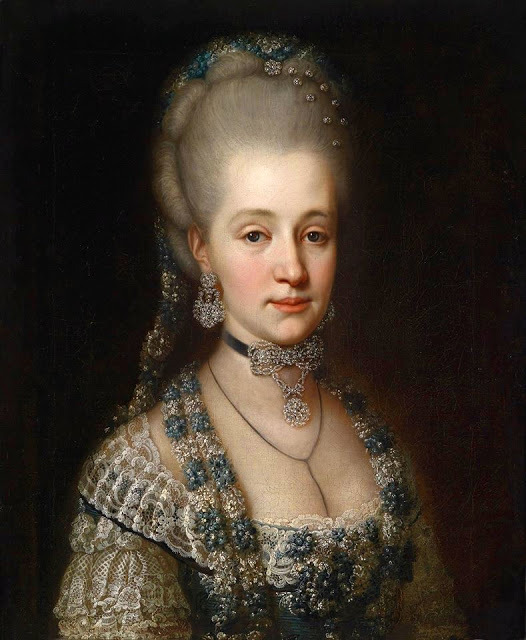
THE DUCHESS
H.I.R.H. Archduchess Maria Christina of Austria, Duchess of Teschen (1742-1798)
#the duchess#archduchess maria christina of austria#duchess of teschen#austria#habsburg#austrian empire#austrian royalty#austrian imperial family#royal#royals#royalty#royaltyedit
12 notes
·
View notes